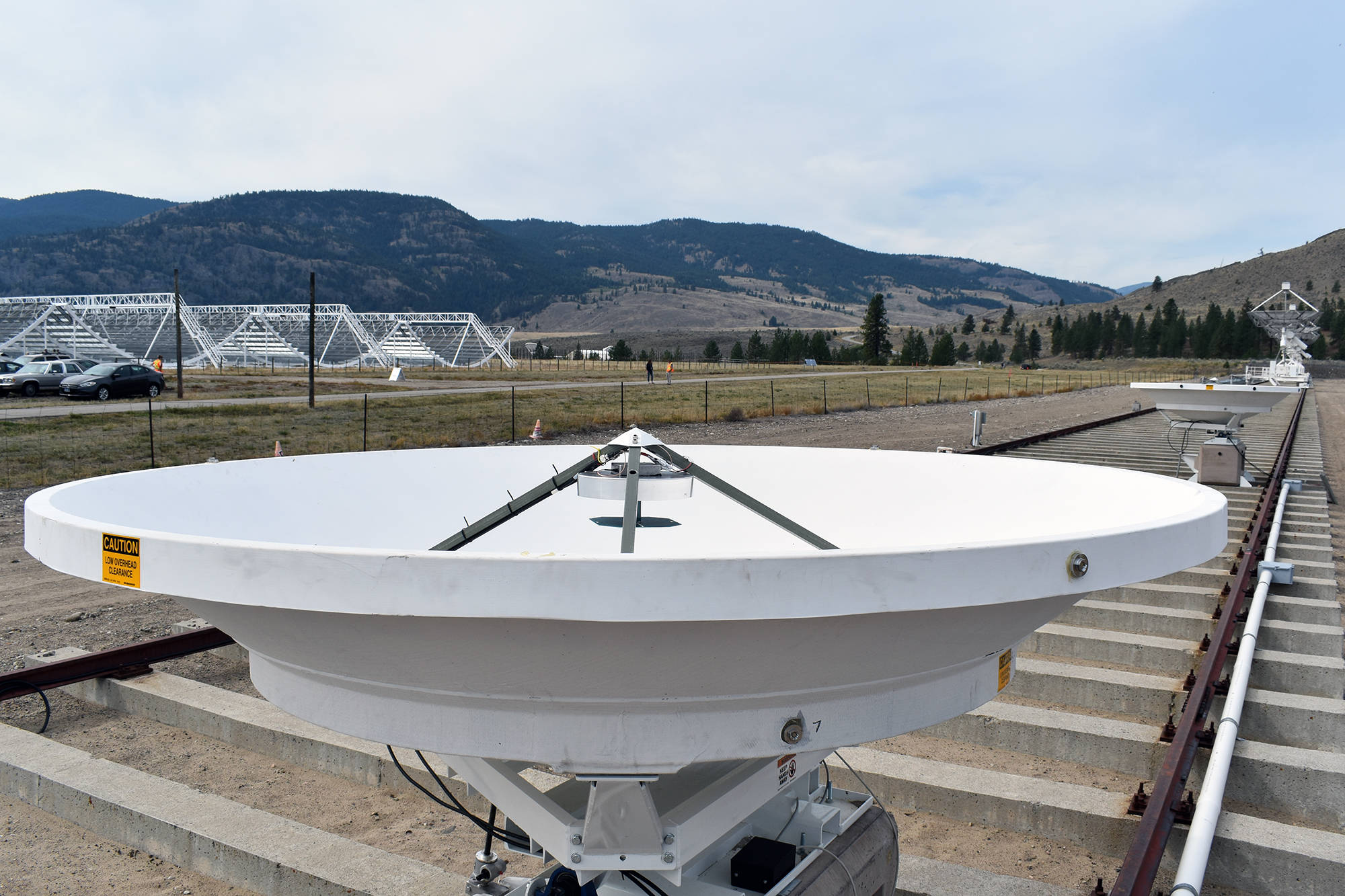The National Research Council’s Dominion Radio Astrophysical Observatory (DRAO) opened its doors to the public on Saturday for a day of tours and talks.
The DRAO shut down its telescopes to allow people to come in and take photos and videos of the facility, as well as enjoy some tours and talks that highlighted the work being done at the observatory.
Hundreds of visitors flocked to the site near White Lake in Kaleden for a rare opportunity to get an up-close look at the equipment being used by the scientists and the new telescopes being designed and built on-site.
The staff of the observatory were eager to share their work in the various telescopes on the grounds, from the rail-mounted Synthesis Telescopes that greet visitors as they walk up to the main building, to the towering John A. Galt Telescope.
The Canadian Hydrogen Intensity Experiment’s radio telescopes dwarfed the tour of visitors standing next to it. Other members of the observatory team were inside the main building’s lab, where parts of telescopes for the Square Kilometre Array in South Africa are being designed and assembled.
Ken Tapping was on hand in the solar observatory, where the information from telescopes tracking the Sun for flares and fluctuations is displayed and processed. Keeping an eye on the solar weather once was about watching auroras in the night sky, but now is more important to people’s everyday lives.
“We started going high-tech in the world, we started being dependent on things like the telegraph, and global networks of communication,” said Tapping to a room full of visitors. “In 1959, the telegraph system was zapped by a solar storm, and they were getting fires and shocks off their equipment. Now, we live in a far more connected world than before, and the Sun can zap satellites, copper wires, and we watch for that.”
Read More: Learn how a radio telescope in the South Okanagan may unlock the mysteries of space
One of the sights at the observatory were the smaller dishes set up on the Synthesis Telescope rails. Just three-metres across, these new telescopes are the first two of 512 planned as part of the Canadian HI Observatory and Radio transient Detector, or CHORD.
CHORD is designed to build on the knowledge that went into the design and construction of CHIME, and the knowledge gained since CHIME went online. Once completed, CHORD will be able to look back even further into the history of the universe, and search for the mysterious Fast Radio Bursts.
The DRAO uses their telescopes for a variety of purposes. CHIME looks into the early days of the universe, tracking radio waves that began travelling to Earth more than 500 billion years ago. Other telescopes track and observe the Sun for solar weather, and others build maps of the entirety of the universe. Together, they help scientists at the DRAO and across the world unravel the secrets of space.
To report a typo, email: editor@pentictonwesternnews.com.
<>@PentictonNews
newstips@pentictonwesternnews.com
Like us on Facebook and follow us on Twitter.
